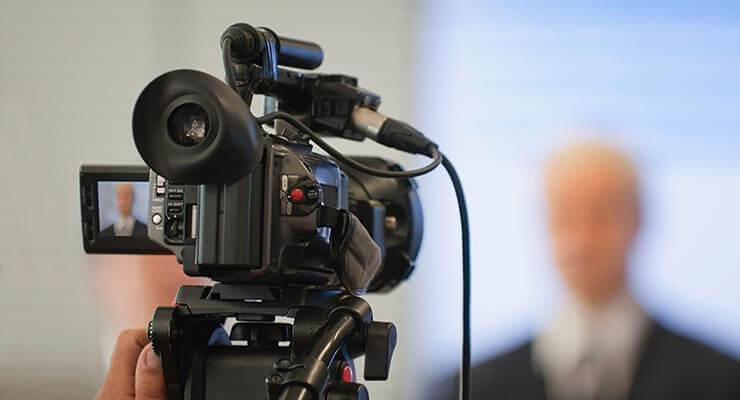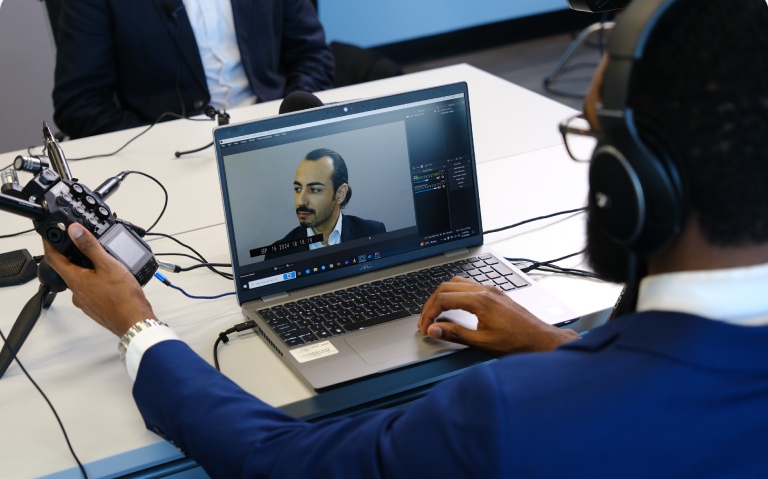Legal Videography: Improving Communication Between Lawyers and Clients
Legal Videography: Improving Communication Between Lawyers and Clients
Blog Article
Why Legal Videography Is Critical for Accurate Court Recordings
The duty of legal videography in courtroom setups can not be overemphasized, as it serves as a necessary tool for preserving the honesty of court records. By capturing both spoken and non-verbal communication, it boosts the quality of witness statements and reflects the subtleties of court interactions. This thorough paperwork not just aids in reducing possible misunderstandings however also sustains appellate reviews, therefore enhancing the judicial process. The effects of integrating legal videography right into conventional courtroom methods elevate essential concerns about its wider influence on the lawful system. What might these implications entail?
Value of Visual Proof
In the world of legal proceedings, the relevance of aesthetic proof can not be overemphasized. Aesthetic evidence acts as a powerful tool in establishing truths, supporting testaments, and boosting the overall clarity of a case. This kind of evidence, that includes photos, video clips, and representations, can give a substantial context that spoken summaries often lack, thereby providing courts and courts a clearer understanding of the scenarios surrounding a situation.
Additionally, visual evidence aids in the retention of information. Human cognition is inherently aesthetic, and individuals are extra most likely to keep in mind and understand details provided in a visual format. In the courtroom, this can be essential, as compelling visual proof can guide point of views and strengthen the narrative presented by lawful reps.
Furthermore, making use of visual proof can lessen misconceptions and ambiguities that frequently arise from spoken exchanges. By supplying a direct representation of occasions, visual proof aids to get rid of subjective interpretations and cultivates a much more objective exam of the realities. The combination of visual evidence right into legal proceedings not just strengthens the honesty of the judicial process yet likewise boosts the probability of attaining a just end result.
Catching Non-Verbal Signs
Using innovative videography techniques can dramatically improve the capture of non-verbal signs throughout legal procedures. Non-verbal interaction, including face expressions, body language, and eye get in touch with, plays an essential duty in conveying emotions and intents that may not be explicitly mentioned in spoken testimony. legal videography. Lawful videography uses high-definition cams and strategic angles to guarantee that these refined hints are taped with quality and precision
The capability to examine non-verbal actions can offer useful context to declarations made throughout court sessions. For example, a witness's hesitation or confidence can be interpreted with their stance or motions, potentially influencing the jury's understanding of credibility. The use of close-up shots can help focus on an audio speaker's expressions, permitting for a more nuanced understanding of the testament.
Furthermore, integrating multiple camera angles can create a comprehensive view of communications, highlighting characteristics in between events entailed. This complex approach not just boosts the precision of the court record yet also aids in preserving the stability of the judicial process - legal videography. Eventually, catching non-verbal cues through lawful Read Full Article videography cultivates a richer, extra full representation of courtroom proceedings

Enhancing Testimony Integrity
The reliability of testament can be considerably reinforced via using high-quality lawful videography. Video clip recordings work as an unbiased medium that records not just the spoken words of witnesses yet likewise the subtleties of their delivery, consisting of tone, pacing, and emotional expressiveness. This diverse documents offers a more clear understanding of the witness's reliability and purposes, which can be critical in lawful proceedings.
Additionally, lawful videography reduces the capacity for false impressions that may develop from created transcripts alone. When jurors can observe a witness's behavior and body movement together with their statement, they are much better outfitted to evaluate the authenticity and integrity of the proof presented. This visual context can strengthen the testimonial narrative, making it extra engaging and reliable.
Furthermore, the visibility of a video clip recording can deter potential disparities in statement. Witnesses might be extra careful in their declarations when they recognize they are being recorded, resulting in more precise and honest accounts. Generally, high-grade lawful videography boosts explanation the integrity of testimony, making certain that the court has accessibility to a full and genuine depiction of the realities as shared by the witnesses.
Sustaining Appeals and Reviews
Lawful videography plays a crucial role in supporting appeals and reviews by providing a comprehensive aesthetic document of court procedures. This visual documentation captures not just the talked words of witnesses and attorneys but also the subtleties of body movement, intonation, and court dynamics. Such components can be essential in comprehending the context of statements and arguments offered.
In the appellate process, where the emphasis gets on errors of law and step-by-step fairness, a video document can serve as an important device for appellate courts. It allows judges to assess the original trial context, making certain that choices are based on a full understanding of the procedures. The ability to aesthetically evaluate the disposition of witnesses or the communications between parties can expose insights that created transcripts might neglect.

Furthermore, lawful videography can aid in making clear ambiguities in testaments find out here or procedural judgments, thereby enhancing the basis for an allure. By providing a reliable, objective account of what taken place in court, legal videography not only sustains the integrity of the legal procedure but likewise encourages all parties included to make enlightened decisions concerning their situations.
Simplifying Court Room Processes
Enhancing courtroom efficiency, lawful videography simplifies procedures by providing immediate access to visual documents of process. This modern technology allows judges, attorneys, and juries to take another look at crucial testament and evidence, making sure that all events have a clear understanding of the instance. By recording the subtleties of spoken and non-verbal interaction, videography improves the document, making it less complicated to realize the context and weight of testaments.

Additionally, video clip recordings can help with remote engagement in hearings, enabling for better versatility in scheduling and engagement, which is particularly useful in complex instances involving numerous stakeholders.
Conclusion
Finally, legal videography plays an essential role in making sure accurate court recordings by supplying important aesthetic evidence that catches both spoken and non-verbal communication. This method boosts the reliability of testaments, sustains appellate reviews, and simplifies courtroom processes. By cultivating a comprehensive understanding of court characteristics, legal videography eventually adds to more equitable judicial results, reinforcing the integrity of the legal system and promoting informed decision-making.
Report this page